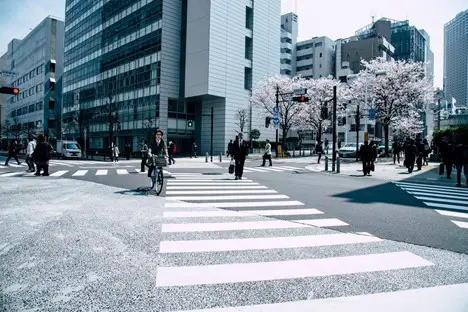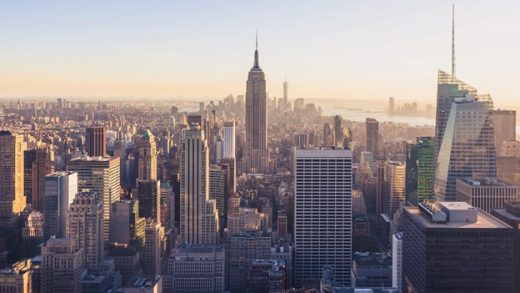Urban design and its importance in creating better cities guide, Good city planning, Built environment masterplanning
Urban design and its importance in creating better cities guide
post updated 12 February 2024
Urban design to create better cities
17 Feb 2021
Whether we like to believe it or not, our daily lives are greatly impacted by the environment that surrounds us. The quality of the public space, including streets, buildings, and recreational areas, has a lot to say in the way people interact, behave, and perceive the world. In a city where most buildings are left to crumble, and streets are improperly lit, people are bound to feel less safe and more stressed.
Ever since the beginning of civilization, public spaces have been pivotal for city life. These are the places where people meet, and the way they perceive these places dictates how they will use or behave around them. If these spaces are attractive, accessible, and inspire safety, they will be used for positive activities and will inspire well-being.
Even though it is often overlooked, good urban design is the main key to urning the streets into a safer, better place and inspiring communities to grow. Good design means more than just the way a city or building looks. It takes into consideration multiple aspects, including appearance, financial value, and how it improves the quality of life.
It is often believed that good urban design is expensive and not worth the cost. While it is true that the initial cost may be bigger, it has been proven that good design is not more expensive when measured across the lifetime of that particular space or building.
To better understand this and prove the positive impacts of good urban design, we must first take a look at what urban design means and how we can measure it.
What is urban design?
Urban design focuses on the way buildings, public spaces, amenities, services, and transport systems in a city are laid out, ensuring they add to the functionality and attractiveness of a city. Contrary to what some may think, urban design involves more than the design of public buildings. It takes into consideration how the building fits inside the landscape, its accessibility, purpose, and environment.
According to Lerna Australia, graduates of urban design courses have been trained in the principles of good design, the use of analytics, sustainability practices, planning processes, and client communication. As well, design studio courses give students “the opportunity to develop drawing, analytical and design skills.”
Professional architects and designers like the Far East Consortium will survey the area where the structure will be, look at the natural elements around the site, and incorporate some of them into their final products.
The results speak for themselves when a beautiful new building arises and seemingly fits into the environment as if it was supposed to be there. No matter how big or small, the architects can plan the design to look as natural as possible against its backdrop.
Green spaces are one of the best examples to understand the many functionalities of urban design. Even though these spaces often serve as a meeting point for people to socialize, they are much more than that. These green spaces have ecological purposes as well, such as improving air quality, boosting protection against weather events, protecting flora and fauna, and reducing the heat-island effect.
What are the benefits of good urban design?
Good urban design can greatly impact the economy and social life of a city. When the environment creates a sense of safety, people are inspired to thrive. It is both in the benefit of the city’s economy and the quality of life of its citizens.
There is a great number of benefits that are brought by good urban design, improving the physical, mental, and economic health of the community. The following are just some examples:
- Hospitals that are designed well will promote faster healing, reduce operational costs, and raises staff performance.
- Schools that follow good urban design principles provide teachers with the means to educate children and promote better student performance
- Well-designed law-enforcement and legal buildings can increase people’s trust in the authorities, reduce recidivism and improve the justice system.
- Urban spaces that are designed with design principles in mind improve social connections, encourage physical activities, and bring a sense of well-being to the community.
- Office buildings that are mindfully designed promote productivity, reduce costs, and stimulate the economy.
- Well-designed transport systems reduce traffic, decrease pollution levels, and boost the overall productivity of the entire city.
- Buildings that blend into the natural landscape don’t negatively influence the population’s thinking about these buildings; they could even refer to them with a sense of pride.
How does urban design impact people’s lives?
Now that we understand, overall, how good urban design can benefit cities, it is time to take a closer look at how it impacts people’s lives by exploring some of its most important elements.
The streets
Streets are considered public spaces and should inspire movement. However, many of them are crowded with cars, allowing very little room for people to interact. Well-designed streets should promote walking and alternate transportation methods, as is the case with Copenhagen, which encouraged cycling and managed to reduce traffic and pollution, increasing the use of public spaces.
With a significant focus on becoming more eco-friendly, many areas, cities, and towns will encourage their citizens to use these alternative methods. These can, however, only be successful if the design lends itself to it.
Public buildings
Public buildings, together with the public spaces around them, are constantly frequented by people. If these buildings do not inspire safety and security, they will reduce public engagement and usage. What’s more, neglecting public municipal buildings can end up costing the local government a lot of money. If a person has been injured due to negligence of public space, such as a piece of a public building falling on them, they are entitled to compensation and can file a public liability claim.
Public squares
When they are well-designed and functional, public squares become the heart of a city. They not only attract locals but tourists as well and can boost the city’s economy. There are two main factors that affect good design for public squares: functionality and attractiveness. Public spaces need to look good so that people feel encouraged to enjoy them, but they also need to be useful. Proper seating spaces and shelter are just two elements that can increase functionality.
The area’s people should be able to visit the space and feel at home. It should be part of their community, not an eyesore that no one wants. Urban designs are perfect for these spaces as they bring more of the environment into the square while adding more functionality.
Private businesses
Private businesses can also add to improved urban design. Take, for example, cafes, restaurants, small kiosks, and public vendors, which attract people to these public spaces in the first place. The key here is to properly integrate these private businesses into the public areas. In some cases, small businesses may be more suited for these areas, as they increase the sense of community and togetherness.
Because urban design considers the area’s current elements and aims to include more of the natural surroundings, it is easier to blend these business buildings into communities. Members of the public and businesses alike will appreciate the smooth integration that doesn’t harm the beauty of their neighborhood.
Urban design and its importance in creating better cities – Bottom Line
Good urban design can have a great impact on the well-being and growth of a city. It is paramount if we want to improve the quality of life of its inhabitants and promote economic growth. When public spaces look good and are, above all, functional, people will be keener to use them for positive activities rather than negative ones. Simply put, a city that treats its inhabitants well will inspire its people to do the same.
Comments on this guide to Urban design and its importance in creating better cities article are welcome.
Architectural Design
Recently added Building posts
Can computers replace architects?
Mackintosh Building Glasgow School of Art
Designing for Extra Care: What Can Covid Teach Us?
What is Modernist Architecture
Building Articles
Residential Architecture
Comments / photos for the Urban design and importance in making better cities advice page welcome.






